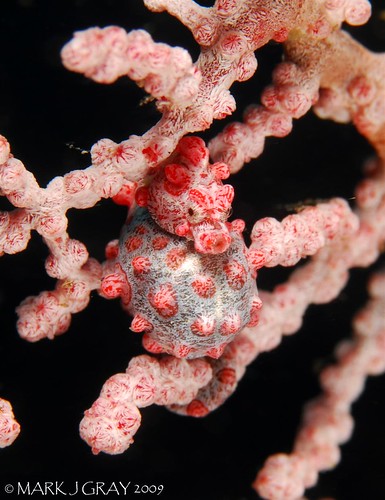I shoot also 75% WA or CFWA simply because the diving conditions in Costa Rica make it often difficoult to shoot in macro. Now here in Sardinia it would be better so i can and will use my 105mm macro more tha the wide angle.
As less water between object and lens is better, a lower focal lenght is theoretical better but shy creatures are difficoult to photograph and a higher focal lenght will help greatly. The 105mm is a great lens for calm waters but can be tricky to handle in current or surge.
I shoot only in autofocus (as i have no manual focus port) and it works fine. Manual focus will give you better control over focus point but this will be almost impossible while diving in currents/surge. Using a good focus light will help the autofocus to lock and spot autofocus metering to lock where you point to. Some people experience problems or disconfort using the Nikon105mm VR lens, as she is doing very rapid movements and hunts too fast for the focus point while the old 105mm is quite slow focusing, but mostly find the target on the first try. Also a lot of users say/complain that the the VR on this lens is on macro quite useless and will not help to reduce motion blur.
Chris
P.S. I don't think that Ikelite housings flood more than a aluminium housing and if the leak comes from a hair/lint/grain you will mostly notice it before too much damage occurs as the housing is transparent. As already said; most full floodings happen in the rinse tank because people leave them inside where they bang together and so the may crack or the port comes off.
In this case a aluminium housing may be sturdier, but that's no arguemta because it is a very bad habit to leave cameras in the rinse tank and the best way to scratch your lenses or flood the whole rig.





